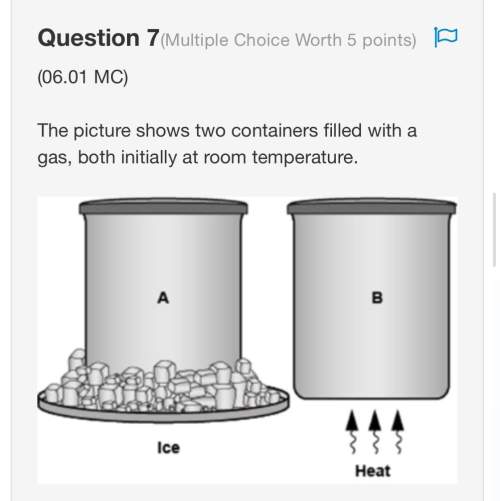
Chemistry, 30.11.2020 03:00 beccahaileyowzryu
Refer to the Introduction section where the identity of the rate- determining reaction was discussed. Suppose that the rate constant for reaction (1a) increases by 2% for each increase of 1 oC, and the rate constant for reaction (1a) increases by 20% for each increase of 1 oC. What would be the percent decrease in the observed elapsed time when the temperature increases by 1 oC? a. 2%.b. 20%.c. 2+20= 22%.d. 0.02 X 20 = 0.4%.

Answers: 3


Other questions on the subject: Chemistry

Chemistry, 22.06.2019 02:30, brittanysanders
When you perform this reaction, what could remain at the end of the reaction? check all that apply. excess reactant aqueous copper chloride excess reactant aluminum oxygen product solid copper carbon dioxide product aqueous aluminum chloride water
Answers: 2

Chemistry, 22.06.2019 07:00, misspicafunpoke
Indicate whether the specified alkyl halides will form primarily substitution products, only elimination products, both substitution and elimination products, or no products when they react with sodium methoxide. 1-bromobutane 1-bromo-2-methylpropane 2-bromobutane 2-bromo-2-methylpropane
Answers: 2

Chemistry, 22.06.2019 08:40, kellymcdow5135
For each of the following compounds, write the formula then predict whether it would be a strong, weak, or non-electrolyte when placed in di water. for the ionic compounds only, put (s) or (aq) after the forrmula formula strong, weak or non electrolyte? a calcium hydroxide b. silver carbonate c. lead(ii) sulfate d. phosphorus trifluoride e. sodium phosphide f barium sulfate g. strontium acetate h. zinc nitrate
Answers: 3
You know the right answer?
Refer to the Introduction section where the identity of the rate- determining reaction was discussed...
Questions in other subjects:

English, 20.01.2021 02:50

Mathematics, 20.01.2021 02:50

Biology, 20.01.2021 02:50

Biology, 20.01.2021 02:50









